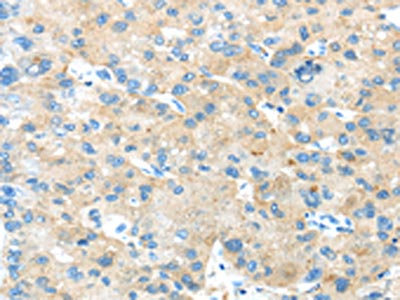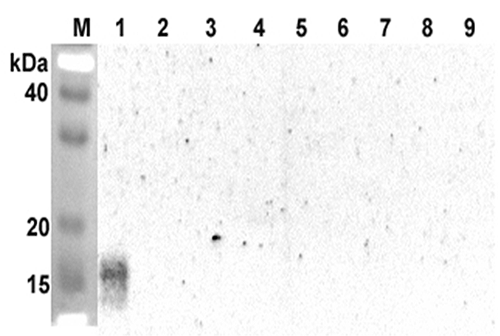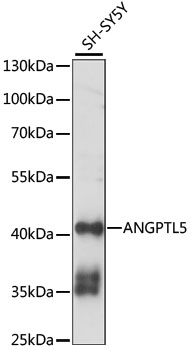
The image on the left is immunohistochemistry of paraffin-embedded Human liver cancer tissue using CSB-PA974102(ANGPTL5 Antibody) at dilution 1/25, on the right is treated with synthetic peptide. (Original magnification: x200)
ANGPTL5 Antibody
CSB-PA974102
ApplicationsELISA, ImmunoHistoChemistry
Product group Antibodies
ReactivityHuman
TargetANGPTL5
Overview
- SupplierCusabio
- Product NameANGPTL5 Antibody
- Delivery Days Customer20
- ApplicationsELISA, ImmunoHistoChemistry
- CertificationResearch Use Only
- ClonalityPolyclonal
- ConjugateUnconjugated
- Gene ID253935
- Target nameANGPTL5
- Target descriptionangiopoietin like 5
- Target synonymsangiopoietin-related protein 5, angiopoietin-like protein 5
- HostRabbit
- IsotypeIgG
- Protein IDQ86XS5
- Protein NameAngiopoietin-related protein 5
- Scientific DescriptionAngptl5 (angiopoietin-like 5) is a 388 amino acid secreted protein that contains one fibrinogen C-terminal domain and is primarily expressed in adult heart tissue. The gene encoding Angptl5 maps to human chromosome 11. With approximately 135 million base pairs and 1,400 genes, chromosome 11 comprises approximately 4% of human genomic DNA and is considered a gene and disease association dense chromosome. The chromosome 11 encoded Atm gene is important for regulation of cell cycle arrest and apoptosis following double strand DNA breaks. Atm mutation leads to the disorder known as ataxia-telangiectasia.
- ReactivityHuman
- Storage Instruction-20°C or -80°C
- UNSPSC41116161






